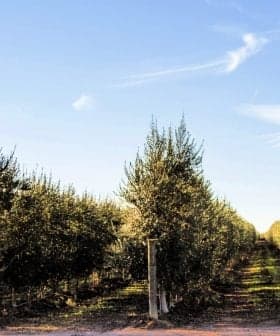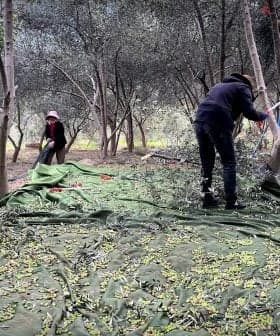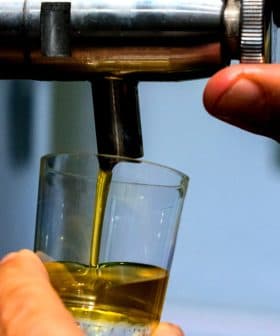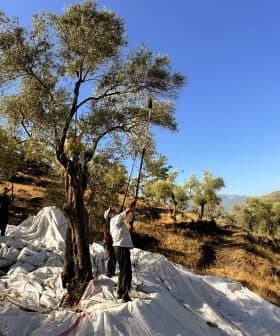Initial Estimates Forecast 1M Tons of Olive Oil Production in Spain
The ongoing drought and scorching summer temperatures are being blamed for the significant production decrease across Spain.
 Andalusia, Spain
Andalusia, Spain Spanish olive growers are expecting a low harvest due to a prolonged drought and heatwaves, with experts predicting a significant drop in olive yields in Spain. The challenging climate conditions are impacting all olive-growing regions, especially Andalusia, leading to concerns about the quality of the olive harvest and the need for adaptation strategies to address climate change in the future.
Spanish olive growers have expressed low expectations for the coming harvest.
Plagued by a prolonged and severe drought and a series of heatwaves, agriculture in Spain is facing one of the most challenging moments in recent years.
The heatwaves are always a problem for any agricultural crop, but we have to get used to them because the next summers will be the same or even worse.
Some experts believe that olive yields in the world’s largest olive oil-producing nation will also significantly drop.
The Minister of Agriculture Luis Planas publicly warned that olive production would slow down. Kyle Holland, an analyst at the research group Mintec, predicted a 25 to 30-percent yield reduction is highly probable.
See Also:2022 Harvest UpdatesLast year, Spain produced 1.3 million tons of olive oil, according to the International Olive Council figures, slightly below the 1.37 million tons of the five-year rolling average.
The Association of Young Farmers and Ranchers (Asaja) in Andalusia estimates that Spain will produce 1 million tons of olive oil in the current crop year.
However, Primitivo Fernández, the director of the National Association of Industrial Packers and Refiners of Edible Oils, said the country has more than 500,000 tons in its stocks, which will meet demand on the national and international markets.
Asaja said the drought has reduced the resilience of non-irrigated groves to the effects of the heatwaves. Furthermore, the reduced amount of water for irrigation also was unable to meet the needs of the irrigated olive groves.
Decreasing water availability for irrigation will weigh on the final production figures as nearly 30 percent of the country’s olive groves are irrigated, according to estimates from Juan Vilar Strategic Consultants.
Most irrigated groves are cultivated under high-density (intensive) and super-high-density (super-intensive) regimes. While representing about one-third of the total olive growing surface area, irrigated groves constitute a disproportionately large amount of total olive oil production in Spain.
The challenging climate is hitting all olive-growing regions, especially Andalusia. The southern autonomous community represents 75 percent of Spanish olive production and is bearing the brunt of the impacts of climate change.
Andalusian olive oil production by value has steadily increased in recent years, fueling regional development. However, it is heavily reliant on water availability.
For example, La Vinuela, a reservoir in Málaga, is now so low authorities estimate it will remain at 11 percent of its total capacity until the end of August.
With its water reserves at a historical low, the area is also suffering from unprecedented dry conditions. A recent study published in Nature Geoscience demonstrates that the Iberian peninsula has not experienced such extreme drought conditions in the last 1,200 years.
According to Holland, the Mintec analyst, Spain’s extreme heat may also pose problems for the quality of the olive harvest along with the quantity.
“There are also major worries in the market regarding the quality of the coming crop and what proportion of the crop will make extra virgin or virgin grades and how much will be classed as lampante,” he said. Lampante is a category of olive oil that cannot be safely consumed unless it is refined.
Carlos Oliva, the sales manager at Finca La Barca, an estate near Toledo in Extremadura, told Olive Oil Times that the current season is especially challenging. Still, they expect the quality to be as high as ever.
“The new harvest will be low in terms of the quantity of olives, but we think we will get good quality,” he said. “The heatwaves are always a problem for any agricultural crop, but we have to get used to them because the next summers will be the same or even worse.”
Oliva added that the current drought emphasized the need for Spain to develop a meaningful public strategy to address climate change.
“We live in one of the poorest areas of Spain, and our government is not doing enough to fight the challenging climate,” he said. “Our company is working on new approaches to improve the harvest quality despite the heatwaves.”
“We think that the weather will affect all crops, and governments should invest large quantities of money now to improve the agricultural methods of work and fight against climate change,” he added. “Every minute counts.”
As the effects of climate change on Spain’s olive groves continue unfurling, researchers are actively working to find new solutions for adapting to the new conditions.
“In the last few years, we have incorporated the adaptation to climate change as one of the main objectives in our breeding work,” said Lorenzo León Moreno, a research director of plant breeding and biotechnology at the Andalusian Institute of Agricultural and Fisheries Research and Training (Ifapa) in Córdoba.
Drought and heat waves have become the most consequential manifestations of climate change to affect Spain’s olive growers.
See Also:Rising Olive Oil Exports Fuel Trade Surplus in AndalusiaMoreno said Córdoba, one of the most productive olive-growing provinces in Andalusia, received 386 millimeters of rain last year, compared to 1,269 millimeters of water evaporation and transpiration.
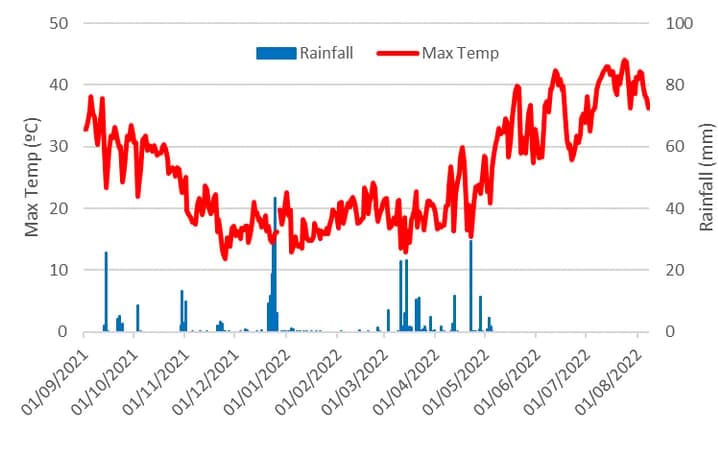
Rainfall and temperature data from Córdoba
This happened “with only six days of rainfall higher than 20 millimeters and no rain since the beginning of May,” Moreno told Olive Oil Times. “Heat stress also had an impact over the past months, with maximum temperatures exceeding 40 ºC throughout this period.”
“This combination will significantly reduce the coming crop in many areas, particularly those under rainfed production, where olive is currently just fighting for surviving,” he added.
Researchers believe the current highly uncertain climatic scenario does not allow accurate predictions.
“Some simulations for the end of the 21st century, even forecast yield increases due to the positive impact of the increase in atmospheric CO2 that counterbalanced the negative impacts of the reduction in rainfall,” Moreno said.
“From our breeding perspective, we can also work on new adaptation strategies in the form of new cultivars that are more resilient to higher temperatures and lower water availability,” he added.
“Unfortunately, the information about the tolerance of different cultivars to these factors is quite limited, so more research will be needed in the coming years to face these challenges of climatic change,” Moreno continued.
The Ifapa researcher added how olive phenology and flowering, above all, are highly affected by climatic conditions.
“Climatic models forecast an advance in the olive flowering dates in the coming years and an increase in the frequency of extreme events around the flowering period,” Moreno said.
“This could translate into two highly negative potential effects for olive production: the lack of chilling hours needed for normal flowering and the occurrence of high temperatures during the flowering hindering pollination and fruit set,” he added.
Moreno also confirmed that extra virgin olive oil quality is expected to be influenced by the changing climate.
He said olive trees growing in countries and regions where temperatures are higher than the Mediterranean average during the lipogenesis process “have already highlighted the modification of some chemical components that determine the quality of extra virgin olive oil.”
“For instance, for fatty acid composition, a significant decrease in the percentage of oleic acid has been observed, which can compromise the commercial quality of the obtained olive oils,” Moreno added.
“From a breeding perspective, it would therefore be advisable to obtain new cultivars with a high and stable oleic acid content under different environmental conditions, particularly increase in temperatures predicted by climate change models,” he continued.
“The potential effect on other quality components is unclear,” he added. “Thus, predicted heat and water stress could increase phenol content, although more experimentation is needed to accurately determine the influence of climate change on phenol content and composition.”
Ifapa recently started work on a new research project to determine the genetic and environmental influences on phenol content in olive oil.
“The influence of high temperatures during harvest season on the organoleptic properties of the extra virgin olive oil is also of serious concern in the previous years, promoting the development of refrigeration systems to be used at industrial levels.”
Given the current scenario and the growing impacts of climate change on olive farming, Moreno stressed “the urgent need for improving the currently available knowledge on these important topics, which could only be achieved by significantly increased research and development funding in the coming years.”
Share this article


